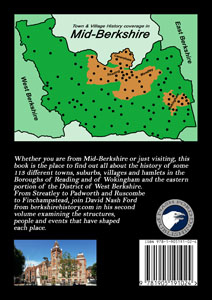 |
 |
||||||||
|
|
Streatley Roman Roads & River Crossings
This place-name is Anglo-Saxon for Street Clearing, the street being the north-south Roman road from Silchester (Roman Calleva) to Dorchester-on-Thames. For many years, misguided Victorian antiquarians actually identified Streatley with the Roman town of Calleva, but the excavations at Silchester in Hampshire in the 1890s produced inscriptions that proved otherwise. There was indeed a Roman settlement in the village, just south-west of the parish church, but it was very small. It was an ideal spot for guarding two trading routes, for there was a second ancient track heading east-west that had a ferry crossing over the Thames where the bridge now stands. The Romans improved the crossing by added a causeway to form a ford. The road is known as the Icknield Way because it took Iron Age man to the land of the Iceni tribe in Norfolk, although it is considerably older. The several sarsen stones scattered around the area are perfectly natural but tradition relates that these were originally thrown there by the 'Aldworth Giants' during a stone hurling competition. The Anglo-Saxon settlement is first mentioned in a 7th century charter granting a parcel of land there to Bradfield Abbey. The ford and ferry became one of the major crossing points between the kingdoms of Wessex (west side) and Mercia (east side). In AD 871, the Vikings had invaded England and made nearby Reading their base for attacking Wessex. When the two sides set out to clash at the Battle of Ashdown, on the Berkshire Downs (probably at Compton, East Ilsley or Aldworth), the Vikings would have marched through Streatley to join the Ridgeway. An Anglo-Saxon warrior burial discovered in the village in 1932 may have been a local man who died in the battle. Before the Norman Conquest, Streatley belonged to Esgar the Staller, Master of the King's Horse, whose main Berkshire manor was in the west of the county at East Garston (originally Esgar's Town). When King William's army arrived, they marched through Streatley on their way to Wallingford to cross the Thames and take London. Esgar survived the regime change for a few years but his lands were eventually confiscated. At the time of the Domesday Survey (1086), Streatley village was recorded as quite large, consisting of 35 men and their families, and included a mill. In the 13th century, King Henry III issued a number of decrees preventing the miller from holding up important watercraft at his weir. Eventually a flash lock was constructed which allowed a 'flash' of water regularly to carry boats over the weir. The original manor house at Streatley is thought by some to have been Place Manor in the High Street, near the crossroads. It has a 16th century core and a beautifully preserved dovecote of the same date. At this time, it was leased it to the Berington (or Buriton) family who have a brass memorial in the parish church. In 1607, an inventor called William Bush made an attempt to travel in a single vessel, by air, land and water through Berkshire. He started by descending from the tower of Lambourn Church in his 'ship'. Giving this a series of wheels, he travelled on across the Downs to Childrey, Aldworth and down to Streatley. There, the vessel entered the River Thames but Mr Bush was so harassed by a group of local bargemen that, in fear for his life, he was forced to flee to his lodgings in the village. The bargemen, meanwhile, scuppered his ship. It took the poor man a month to make repairs but he did eventually manage to sail his ship to London. In the late 17th century, Captain Thomas Harwood RN (died 1713), who had fought valiantly in the Dutch Wars, retired to Streatley Farm, a handsome brick house dated 1673, where his descendants lived for several generations. He also acquired land in Maryland in the United States, where his son, Richard, has many descendants. Another fine property, Streatley House, in the High Street, represents the Rectory estate. It was built in 1765 for the Stone family and later passed to the Morells. This latter family owned almost two-thirds of the village and dominated life there for most of the early 20th century. However, double death duties due in quick succession eventually forced them to sell up. The Royal Veterinary College were there in the 1940s and 50s. The backwater in front of the medieval mill at Streatley is said to have been the setting for Mole and Ratty's picnic in the opening scene of 'The Wind in the Willows', although it is more likely that it was the inspiration for EH Shepard's illustrations, as the author, Kenneth Grahame, was by that time living in Pangbourne. He wrote the book in Cookham Dean. The mill was a famous beauty spot for centuries but it burnt down in 1926, shortly after being converted for electricity generation. Streatley and the Bull Inn (formerly the Turnpike post house) feature in Jerome K Jerome's 'Three Men in a Boat' and Oscar Wilde is said to have stayed at the Swan Inn, on the river. This building was first turned into a pub in 1698 by Francis Swan who gave it his family name. He was the grandfather of architect, Sir John Soane. In the 1970s, it was owned by entertainer, Danny La Rue, and saw many visitors from the world of show business. Read more history of Streatley and other nearby settlements, like Upper Basildon, Tutts Clump, Rotten Row & Bradfield Southend, in David Nash Ford's book, 'Mid-Berkshire Town and Village Histories'.Click to Order direct from the Author.
|
||||||||
| © Nash Ford Publishing 2011; Revised 2015; Revised 2020. All Rights Reserved. | |||||||||





